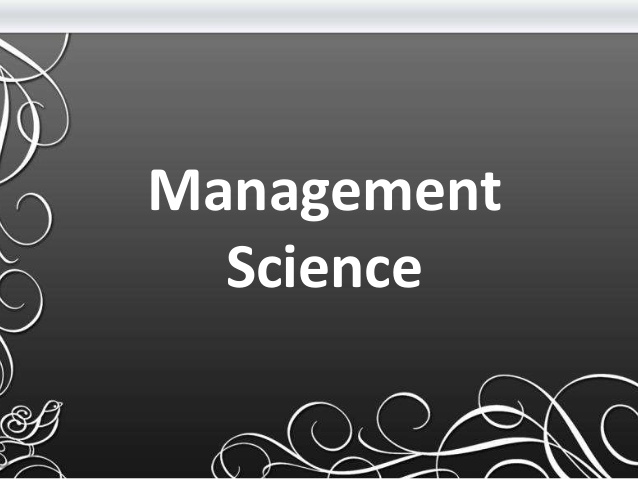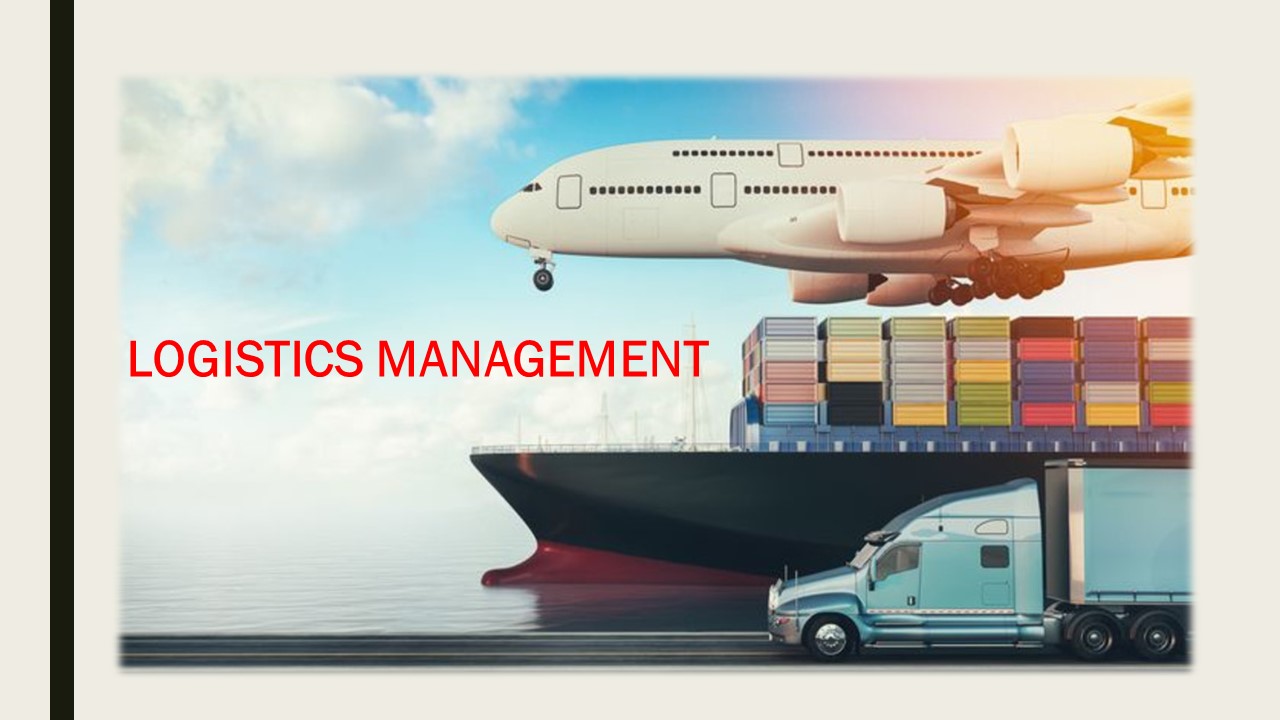
- Teacher: RAJANI THOMAS
ST.MARYS COLLEGE
YOUSUFGUDA, HYDERABAD - 500045
DEPARTMENT OF MANAGEMENT
III YEAR I Semester ( Section A)
COURSE HANDOUT
|
Course Code |
: |
BB505 |
||
|
COURSE TYPE |
|
|
||
|
Course Title |
: |
|
||
|
Course Structure
|
:
|
Lectures |
Credits |
|
|
4 |
4 |
|||
|
Course Instructor-In-Charge |
: |
Mr. M.Satya Swaroop Roy, Assistant professor |
||
COURSE OBJECTIVE:
The Course aims to understand the role of Logistics Management in enhancing organizational
efficiency and delivering customer value. The various drivers of a successful Logistics strategy and
Structure is also addressed in the programme.
Course Outcomes:
CO1 : Understand the strategic importance of logistics to achieving business success
CO2 : Describe the concept of integrated logistics
CO3 : Remember the importance of customer accommodation to successful logistics
CO4 : Analyse combination of customer accommodation, procurement and manufacturing representing the supply chain operational areas linked and supported by logistics
CO6 : Apply the global perspective of today’s business operations
CO7 : Analyse Rationale for inventory and associated costs
CO8 : Understand Benefits of logistics outsourcing
CO9 : Analyse Outsourcing value proposition
CO10 : Remember Inventory classification and functions
SYLLABUS:
UNIT – I :INTRODUCTION :
Logistics Management, Inbound, Internal and Outbound Logistics in SCM, Developing the Logistics organization for effective Supply Chain Management, development of Integrated Logistics Strategy, Logistics in Maximizing profitability and cash flow, 3PL, 4PL, International Logistics, Reverse Logistics.
UNIT – II :PROCUREMENT :
Sourcing of material, Global Sourcing – issues and problems. E-Procurement, Group Purchasing, Reserve Auctions, Creating and Managing Supplier Relations, Supplier Partnerships, Multi-tier Supplier partnerships.
UNIT – III : INVENTORY MANAGEMENT :
Inventory Management in Supply Chain – Role and importance of inventory in SC, Inventory Policies, Inventory as an element of customer service, JIT, VMI, Outsourcing, Factors influencing the decision making process of outsourcer.
UNIT – IV :TRANSPORTATION :
Transportation in SC, Transportation formats, Modes of Transportation, factors affecting transportation performance, Factors influencing the selection of transporter, modes of transport, Fleet Management, Multi Model Transport, Containerization, Vehicle Scheduling and Routing,Milk run and cross docking.
UNIT – V :WAREHOUSING :
Warehousing – Types of warehouses, warehousing operations, Warehouse automation, Warehouse Management Systems. Third party and value added warehousing, Role and importance of Handling Systems, Selection of Handling Systems. Pricing, Revenue Management and role of IT in SCM. Role, importance and selection of Handling Systems in SC integration.
ASSIGNMENT:
Students are instructed to give ppt presentation on the Topic assigned by Lecturer
The students will be asked to write a complete answer for two questions from each unit in A4 size papers.
Assignments to be submitted after the completion of 3rd unit.
GUIDELINES ON CLASS PARTICIPATION:
· Students are requested to be in class before Lecturer comes into the class room
· Late entries (After 5 Minutes) into the class are strictly prohibited.
ASSESSMENT SCHEDULE:
· There will be 2 internal exams of 15 marks each and one Assignment of 5 marks.
· Internal Exam Pattern: 10 MCQ type questions, 10 Fill in the blanks and 5 short answer type.
· There will be a Pre-final exam of 80 marks at the end of the course.
Pre- final Pattern:For Short Answers Questions: need to answer 5 out of 8 Questions 5*4 =20,
For Essay Questions: need to answer 5 questions (Internal Choice) 5*12=60;
REFERENCE BOOKS:
- Leenders, Michiel R and others, “Purchasing and Supply Chain Management”, 2010, TMH.
- Coyle, J.J. Bardi E.J. Etc., “A Logistics Approach to Supply Chain Management”, 2009, Cengage, 1st Edition.
- Power Mark J & Others, “The Outsourcing Hand Book How to Implement a Successful Outsourcing Process”, 2007, Kogan Page, 1st Edition.
- Mohanty, R.P and Deshmukh, S.G, “Essentials of Supply Chain Management”, 2009, 1st Edition. Jaico,
- Chandrasekaran. N, “Supply Chain Management process, system and practice”, 2010, Oxford, 1st Edition.
- Supply Chain Logistics Management by Donald Bowersox, David Closs, M. Bixby Cooper
Teaching Methodology:
![]() Lecture / Discussion method
Lecture / Discussion method
![]() Activity based teaching
Activity based teaching
![]() PowerPoint presentations
PowerPoint presentations
![]() Discussion – group discussion/brain
storming
Discussion – group discussion/brain
storming
![]() Case study
Case study

- Teacher: SATYA SWAROOP ROY MEDAPATI
COURSE OBJECTIVE:
This course is intended to familiarize the students with the basic concepts of Business Correspondence from the organizational backdrop perspective. It will also enable the students to communicate formally, highlighting their strengths and present themselves in a more appropriate manner to the corporate world.
COURSE OUTCOMES:
CO1: The students will be able to develop both oral and written communication skills.
CO2: They will understand the strategies appropriate for formal communication.
CO3: Develop critical thinking skills while determining solutions to the organizational problems.
CO4: The students will be able to write different types of reports as per the situations.
SCOPE OF THE COURSE:
This course discusses about the importance of business correspondence. It includes the topics like business letters and reports. It also includes business meetings and its types. The following are the major areas divided in to two units covered in the course:
UNIT - I:
INTRODUCTION TO BUSINESS CORRESPONDENCE:
Business Correspondence – Importance of Business Correspondence – Communication and organization effectiveness. Business letters – Need and Functions of Business Letters – Structure and Format of Business Letters – Types of Business Letters – Writing Cover Letters – Letters for Enquiry – Offer – Order – Purchase and Complaint.
UNIT - II :
REPORT WRITING AND BUSINESS MEETINGS:
Report Writing –Importance of Report Writing – Types of Reports – Characteristics of good Report
– Structure of Report Writing. Business Meetings – Importance of Business Meetings – Types of
Business Meetings – Agenda – Minutes of the Meeting (MOM).
GUIDELINES ON CLASS PARTICIPATION:
· Students are requested to be in class before Lecturer comes into the class room
· Late entries (After 5 Minutes) into the class are strictly prohibited.
ASSESSMENT SCHEDULE:
· There will be 2 internal exams of 10 marks each.
· Internal Exam Pattern: 10 MCQ type questions, 10 fill in the blanks.
· Pre- final Pattern :
· For Short Answers Questions: Students need to answer 2 out of 2 Questions (5*2=10) Marks.
· For Essay Questions: Students need to answer 2 questions (Internal Choice) out of 4 Questions (2*15=30) Marks.
REFERENCE BOOKS:
1. Technical Communication: M.Raman & Sharma, Oxford University Press.
2. Business Communication: From Principles to Practice – Matukutty M.Monippally, UBS Publishers
3. Business Letters: The Effective Commercial Correspondence- R.Gupta, RPH Editorial Board
4. Commercial Correspondence – Ghosh & Bhushan
5. Business Communication, Urmila Rai and S.M.Rai, Himalaya Publishers
6. Essentials of Business Communication – Rajendra Pal and J S Korlhalli – Sultan Chand & Sons, New Delhi.
Teaching Methodology:
![]() Lecture – Discussion method.
Lecture – Discussion method.
![]() Activity based teaching
Activity based teaching
![]() PowerPoint presentations
PowerPoint presentations
![]() Discussion – group discussion/brain storming
Discussion – group discussion/brain storming

- Teacher: JAYASREE M
COURSE OBJECTIVE:
Quality is the most significant characteristic of product or service in today’s world. This course introduces traditional and modern quality perspectives. To give the students an overview of quality and TQM and explaining the salient contributiors of Quality management like Deming, Juran and Crosby.
CO1:- Develop and understanding on Total Quality Management (TQM) philosophies and frameworks.
CO2:-Evaluate the principles of quality management and to explain how these principles can be applied within quality management systems.
CO3:- Identify the key aspects of the quality improvement cycle and to select and use appropriate tools and techniques for controlling, improving and measuring quality.
CO4:-Apply the basic concepts of statistics and probability to quality management and control.
- Teacher: Dr. KUSUMA REDDY C

COURSE
OBJECTIVE:
The course helps the students to the various connotations of Costs and their utility in decision making and formulating long-term strategies.
CO 1.Cost accounting is used for decision making and performance evaluation.
CO 2 . Cost Accounting Methods to Optimize the use of people, resources, and materials.
CO 3.Analyze Overhead Costs and select the best methods of Allocating Overhead in a divers or multi product Operation
CO 4. Purpose and Application of Process Costing and Calculate Equivalent Production Units.
CO 5.Recognize and Differentiate Between Shared Costs and Separable Costs.
CO 6.Create an Income Statement for use in a Cost-Volume-Profit Analysis that segregates Costs according to their behavior.
CO 7..Target Costing and Target Pricing aimed at ensuring the project’s profitability.
CO 8.Decentralization results in the creation of separate Responsibility Centres.
CO 9. To meet cost audit regulations.
CO 10. Flexible budget analysis is useful in setting up costs at various levels of activity.
- Teacher: Dr. KUSUMA REDDY C